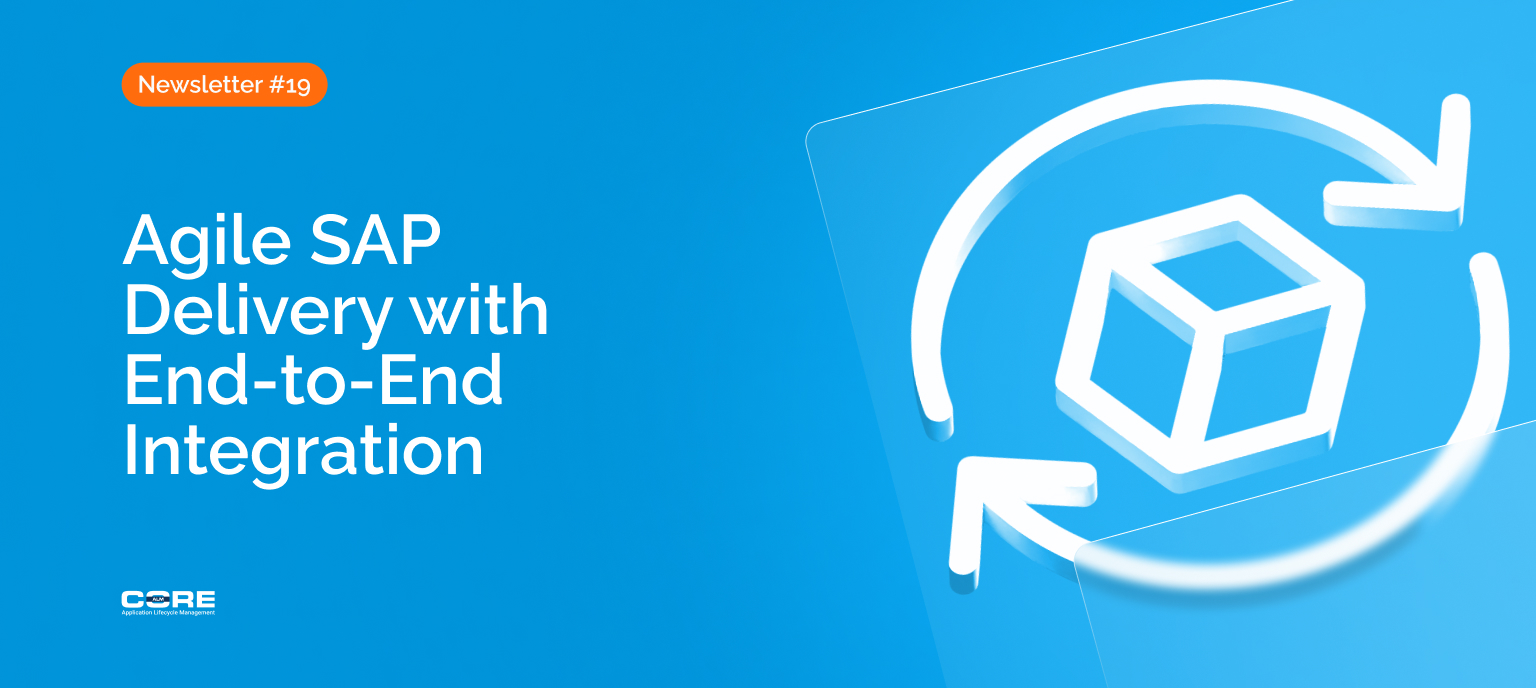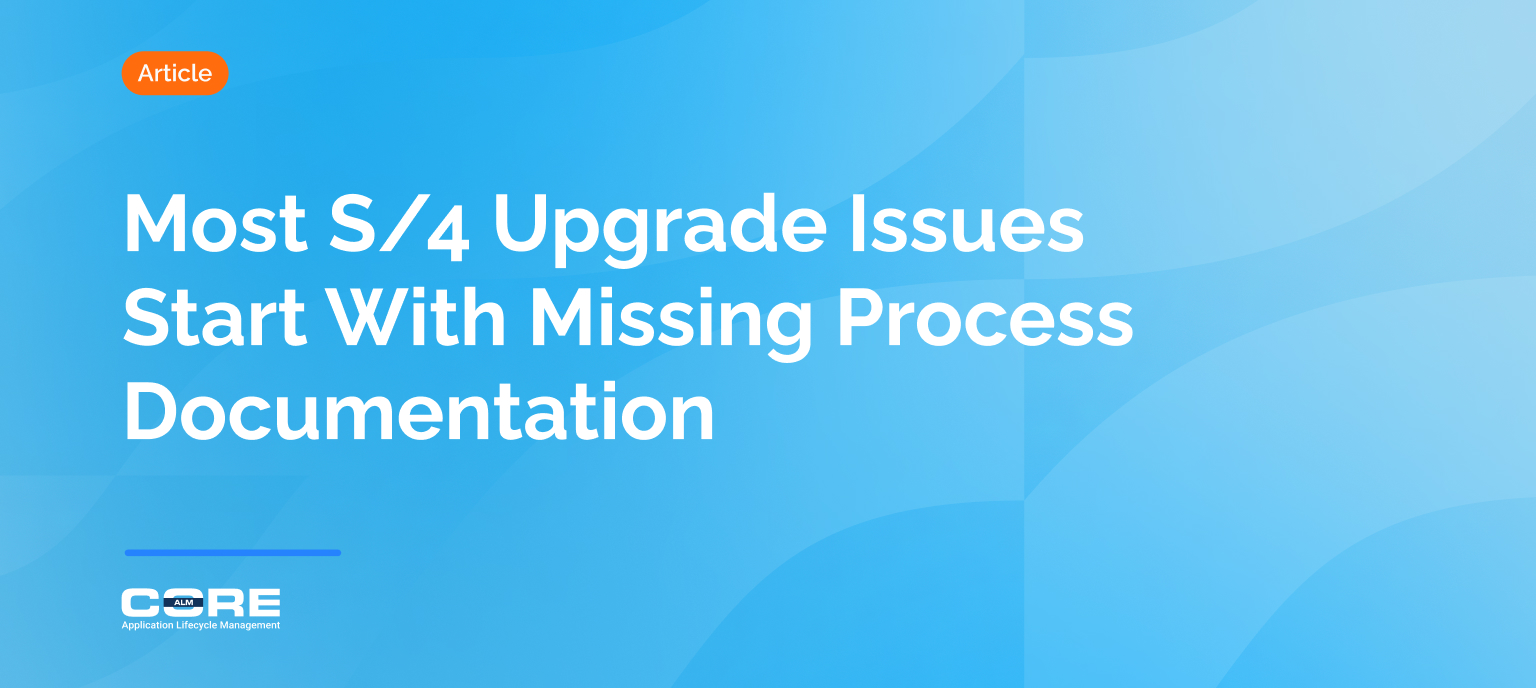Introduction
When Jira, Cloud ALM, and STMS move as one, SAP joins the enterprise pipeline.
Agile has transformed how digital teams deliver change. Business process improvements and User Stories flow from the backlog to deployment in a continuous pipeline, where every step adds validation without breaking rhythm. In SAP, however, that rhythm often falls apart. Jira or Azure DevOps may run the ceremonies, but SAP transports still follow their own slower process. Approvals, testing, and impact checks happen late. Stories look “done” in the backlog, only for failed transports to appear weeks later.
The solution is to bring SAP into the same pipeline model used by the rest of IT. That means not only connecting Jira, Cloud ALM, and STMS, but embedding automation that validates quality, impact, and compliance as part of the flow. Done right, SAP delivery becomes faster, safer, and aligned with enterprise-wide agility.
When Jira, Cloud ALM, and STMS move as one, SAP joins the enterprise pipeline.
From Backlog to Transport Without Gaps
Integration eliminates the hand-offs that stall Agile.
Agile delivery loses meaning if stories in Jira or ADO are disconnected from the transports that realize them in SAP. By linking Jira or ADO with SAP Cloud ALM, requirements and tests stay synchronized across platforms. From there, transport requests can be created directly from scope items. Agile boards then show not just story status, but whether the related transports are progressing through QA and production.
Solution in practice: CoreALM provides pre-built connectors for Jira and Azure DevOps to SAP Cloud ALM, along with direct transport management solutions for STMS. These eliminate re-keying, reduce errors, and keep Agile teams working from a single source of truth.
Integration eliminates the hand-offs that stall Agile.
Embedding Shift-Left Automations
Validation moves earlier, where it prevents the most rework.
- Transport conflict and dependency checks catch sequencing issues before they leave development.
- Change impact analysis (e.g., Tricentis LiveCompare) identifies which processes and integrations are affected by a transport as soon as it is created.
- Automated testing (e.g., Tricentis Tosca) runs against those processes immediately when transports move, not weeks later.
- Code quality analysis validates ABAP for performance, security, and clean-core compliance before transports advance.
These automations reduce late-stage surprises and keep Agile sprints predictable, while reinforcing clean-core principles that protect future flexibility.
Validation moves earlier, where it prevents the most rework.
SAP in the Same Pipeline as the Rest of IT
Enterprise agility requires one delivery fabric, not two.
The goal is not just faster SAP transports, but a unified delivery system across the enterprise. With CoreALM connectors, SAP requirements and test evidence live in the same ecosystem as non-SAP work. With direct STMS integration, SAP transports flow inside Jira or ADO pipelines alongside microservices, APIs, and cloud deployments.
This alignment ensures that every change — whether an ABAP enhancement, a Fiori app, or a non-SAP component — is governed by the same pipeline rules. Evidence is captured automatically, approvals are logged in context, and compliance checks run continuously. SAP is no longer the exception; it becomes a first-class participant in the enterprise delivery pipeline.
Enterprise agility requires one delivery fabric, not two.
Conclusion: Integration and Automation Make SAP Agile
Agile SAP projects cannot succeed on ceremonies alone. They need an end-to-end pipeline that links backlog, tests, and transports — and they need automation that shifts validation earlier in the cycle.
By integrating Jira or Azure DevOps with SAP Cloud ALM and STMS, and by embedding transport checks, impact analysis, automated testing, and code quality validation, SAP delivery moves with the same cadence as the rest of IT.
CoreALM enables this model with connectors and transport management solutions that unify planning and delivery. Combined with automation from Tricentis, organizations reduce risk, accelerate outcomes, and enforce clean-core principles. The result is not just speed, but confidence that SAP and non-SAP delivery are aligned, validated, and ready for innovation.




